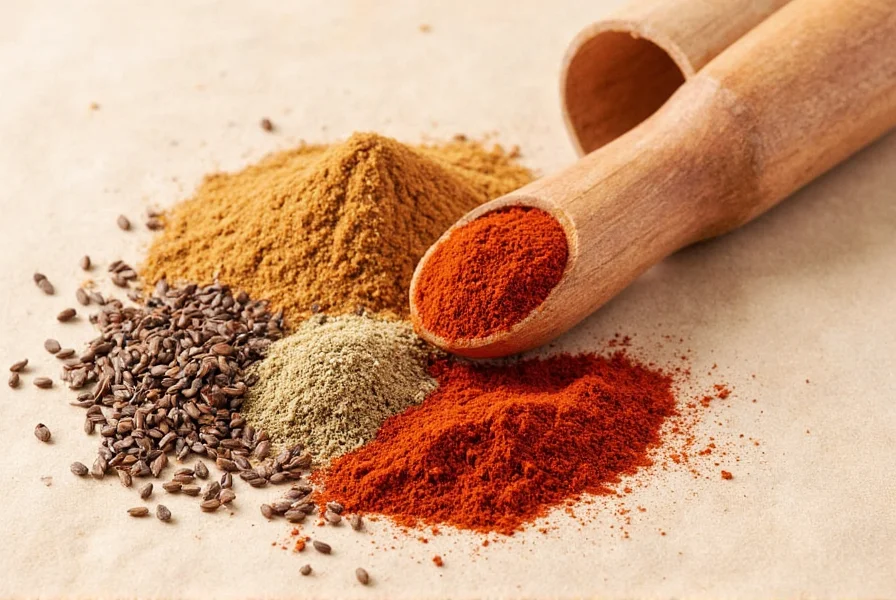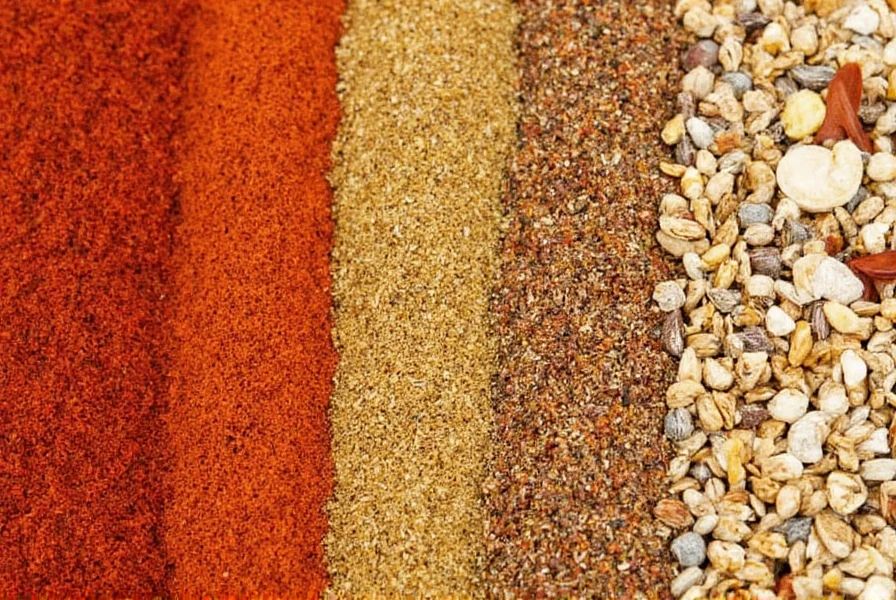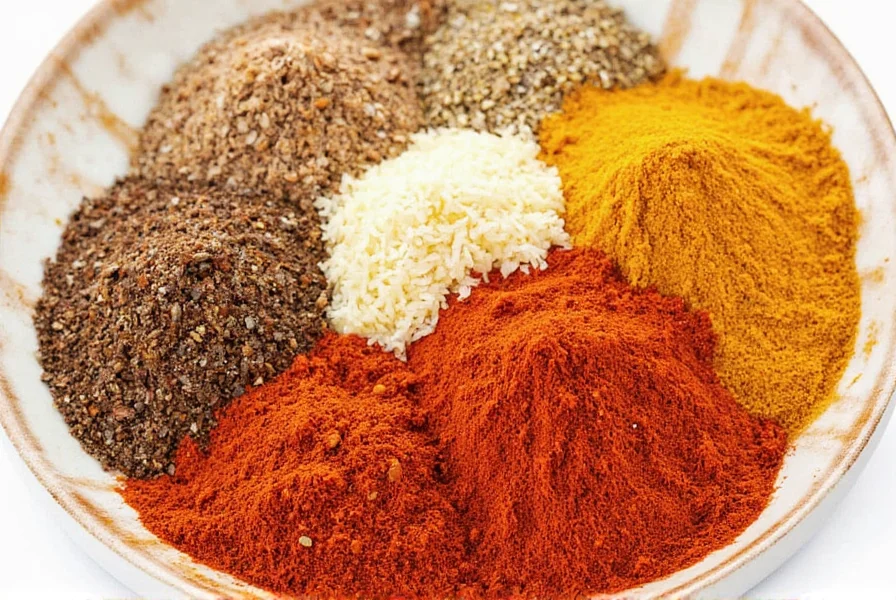When you're in the middle of preparing a recipe and realize you're out of allspice, knowing reliable substitution options becomes essential. Allspice, despite its name, isn't a blend but a single spice made from dried Pimenta dioica berries. Its unique flavor combines notes reminiscent of cinnamon, cloves, nutmeg, and pepper, which is why recreating it requires strategic blending of other spices.
Understanding Allspice Flavor Composition
Allspice earned its name because early European explorers thought it tasted like a combination of several spices. The primary flavor compounds in allspice include eugenol (also found in cloves), which provides that warm, spicy note, along with cinnamaldehyde (from cinnamon) and myristicin (from nutmeg). When creating an allspice substitute, you're essentially trying to balance these three dominant flavor elements.
Historical trade patterns significantly influenced modern substitution practices. Allspice was introduced to Europe in the early 16th century but remained scarce during transatlantic trade restrictions of the 17th-18th centuries. European cooks developed the cinnamon-clove-nutmeg blend as a practical alternative when genuine allspice was unavailable, establishing the ratio still used today[1].
[1] Encyclopædia Britannica. (2023). Allspice: History and Trade. Retrieved from https://www.britannica.com/topic/allspice
Top All Spice Substitute Options
Not all substitutes work equally well in every recipe. The best alternative depends on whether you're preparing sweet or savory dishes, and which spices you have readily available in your pantry.
Cinnamon-Clove-Nutmeg Blend (Most Accurate Substitute)
This classic combination delivers the closest approximation to genuine allspice. The precise ratio matters significantly for optimal results:
| Allspice Required | Cinnamon | Cloves | Nutmeg |
|---|---|---|---|
| 1 teaspoon | 1/2 teaspoon | 1/4 teaspoon | 1/4 teaspoon |
| 1 tablespoon | 1 1/2 teaspoons | 3/7 teaspoon | 3/4 teaspoon |
| 1/4 cup | 3 tablespoons | 1 1/2 tablespoons | 1 1/2 tablespoons |
This blend works exceptionally well as an allspice substitute for baking and in recipes where allspice is a primary flavor component. For the best results, use freshly ground spices rather than pre-ground versions when creating this mixture.

Individual Spice Alternatives
When you need a quick solution and don't want to blend multiple spices, these single-ingredient options can work in a pinch:
- Cinnamon (as allspice replacement): Use 3/4 teaspoon cinnamon for every 1 teaspoon of allspice. Best for sweet recipes like apple pie or pumpkin bread where the missing clove notes won't be as noticeable.
- Cloves (as allspice substitute): Use 1/2 teaspoon ground cloves per 1 teaspoon allspice. Ideal for ham glazes or mulled wine where the stronger clove flavor complements other ingredients.
- Nutmeg (allspice alternative): Use 3/4 teaspoon nutmeg per 1 teaspoon allspice. Works well in creamy sauces or eggnog where the subtle nutmeg flavor shines.
Pre-Mixed Alternatives
If you have these common spice blends already in your pantry, they can serve as convenient allspice replacements:
- Pumpkin pie spice: Use a 1:1 ratio as an allspice substitute in baking applications. Contains cinnamon, ginger, nutmeg, and cloves in proportions similar to allspice.
- Apple pie spice: Substitute 1:1 for allspice in fruit-based desserts. Slightly less complex than pumpkin pie spice but works well in sweet applications.
- Garam masala: Use 3/4 teaspoon garam masala per 1 teaspoon allspice in savory dishes. This Indian spice blend contains many of the same components but may introduce additional flavors depending on the specific blend.
Substitution Guidelines by Recipe Type
The effectiveness of an allspice substitute varies significantly depending on whether you're preparing sweet or savory dishes. Understanding these distinctions helps you choose the most appropriate alternative.
Allspice Substitute for Baking
For sweet applications like cakes, cookies, and fruit pies, the cinnamon-clove-nutmeg blend works perfectly. When making gingerbread or spice cakes, you can even add a tiny pinch of ground black pepper (about 1/16 teaspoon per teaspoon of allspice) to better mimic allspice's complexity. Pumpkin pie spice makes an excellent 1:1 substitute in most baking applications without requiring additional measurements.
Allspice Replacement in Savory Dishes
Savory recipes like jerk seasoning, meat rubs, or stews require more careful substitution. For Caribbean jerk seasoning, the classic blend is essential, but if you're short on allspice, increase your cloves slightly while maintaining the cinnamon-nutmeg balance. In meat marinades or braises, consider adding a small amount of black pepper to your substitute blend to replicate allspice's subtle heat component.

Common Substitution Mistakes to Avoid
Even experienced cooks make these errors when substituting for allspice:
- Using equal parts of each spice: The standard 2:1:1 ratio (cinnamon:cloves: nutmeg) is crucial. Equal parts creates an overpowering clove flavor.
- Not adjusting for pre-ground vs. fresh spices: Pre-ground spices lose potency faster. If using older spices, increase quantities by 25%.
- Substituting in large quantities: When replacing more than 1 tablespoon of allspice, consider reducing the total substitute amount by 10-15% to prevent flavor dominance.
- Ignoring recipe acidity: In tomato-based sauces or citrus marinades, increase the cinnamon component slightly as acidity can mute spice flavors.
Context Boundaries for Allspice Substitutes
Culinary research demonstrates that substitution effectiveness depends on specific cooking conditions. University extension studies identify critical context boundaries where substitutes succeed or fail based on pH levels, cooking duration, and ingredient interactions[2].
| Substitute Type | Optimal Conditions | Failure Thresholds |
|---|---|---|
| Cinnamon-Clove-Nutmeg Blend | Baking ≤ 350°F (175°C), neutral pH dishes | Loses complexity in high-acid foods (pH < 4.0); reduce cloves by 25% in tomato-based sauces |
| Pumpkin Pie Spice | Moist baking applications (muffins, quick breads) | Ginger overpowers in dairy sauces; avoid in custards and béchamel |
| Individual Cloves | Long-simmered dishes (>2 hours), ham glazes | Overwhelms delicate flavors in seafood; never use 1:1 in fruit desserts |
[2] University of Maryland Extension. (2019). Spice Chemistry and Stability in Cooking Applications. Retrieved from https://extension.umd.edu/sites/default/files/_docs/programs/nutrition-healthy-choices/spice_up_your_life.pdf
Creating Your Own Allspice Blend in Advance
For frequent cooks, preparing a small batch of homemade allspice substitute saves time during meal preparation. Combine 4 tablespoons cinnamon, 2 tablespoons ground cloves, and 2 tablespoons nutmeg in an airtight container. This mixture will stay fresh for up to 3 months when stored in a cool, dark place. Label the container clearly as "Allspice Substitute" to avoid confusion with individual spices.
Special Considerations for Dietary Restrictions
For those with specific dietary needs, these alternative approaches work well:
- For low-sodium diets: Allspice substitutes naturally contain no sodium, making them ideal flavor enhancers without adding salt.
- For histamine intolerance: Reduce or eliminate cloves from your substitute blend, as cloves are higher in histamines than cinnamon or nutmeg.
- For those avoiding nut allergens: While nutmeg isn't technically a nut, some with severe nut allergies avoid it. In this case, use a 3:1 ratio of cinnamon to cloves instead.
Testing Your Substitute
Before adding your allspice substitute to the entire recipe, test it first. Mix a small amount with a spoonful of the recipe's base liquid (like broth or milk), then taste. This allows you to adjust the balance before committing to the full dish. Remember that spice flavors intensify slightly during cooking, so your substitute should taste just slightly milder than your target flavor when tested raw.
Frequently Asked Questions
Can I use five spice powder as an allspice substitute?
Yes, but with caution. Five spice powder contains star anise, fennel, cloves, cinnamon, and Szechuan pepper, creating a different flavor profile. Use only 3/4 teaspoon five spice powder per 1 teaspoon allspice required, and avoid in recipes where allspice is the dominant flavor.
What's the best allspice substitute for apple pie?
For apple pie, pumpkin pie spice works perfectly as a 1:1 allspice substitute. If unavailable, use 3/4 teaspoon cinnamon plus 1/4 teaspoon nutmeg per teaspoon of allspice called for. Avoid heavy clove usage in apple desserts as it can overpower the fruit flavor.
How does allspice substitute affect cooking time?
Allspice substitutes don't affect cooking time, but they may require slight adjustments in how early you add them. Ground spice blends lose potency faster than whole allspice berries, so add substitute blends later in the cooking process for maximum flavor impact, particularly in long-simmering dishes.
Can I substitute allspice with mixed spice in British recipes?
Yes, British mixed spice makes an excellent 1:1 substitute for allspice in most recipes. Mixed spice typically contains cinnamon, coriander, caraway, nutmeg, and cloves in proportions similar to allspice, though it may include additional spices like orange zest.
Does allspice substitute work in jerk seasoning?
For authentic jerk seasoning, the cinnamon-clove-nutmeg blend works well as an allspice substitute, but maintain the traditional 4:2:2 ratio. Since allspice is jerk seasoning's dominant flavor, don't reduce the total quantity when substituting, and consider adding 1/8 teaspoon black pepper per teaspoon of substitute to replicate allspice's subtle heat.











 浙公网安备
33010002000092号
浙公网安备
33010002000092号 浙B2-20120091-4
浙B2-20120091-4